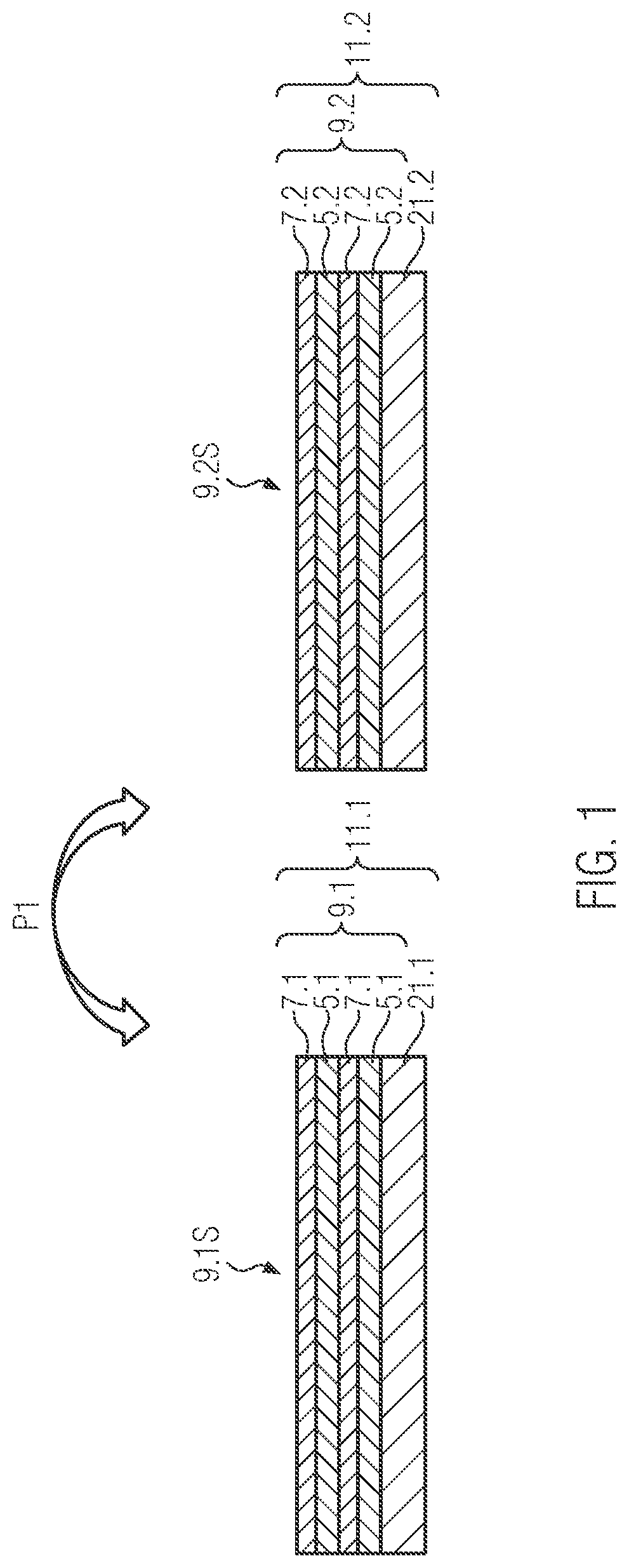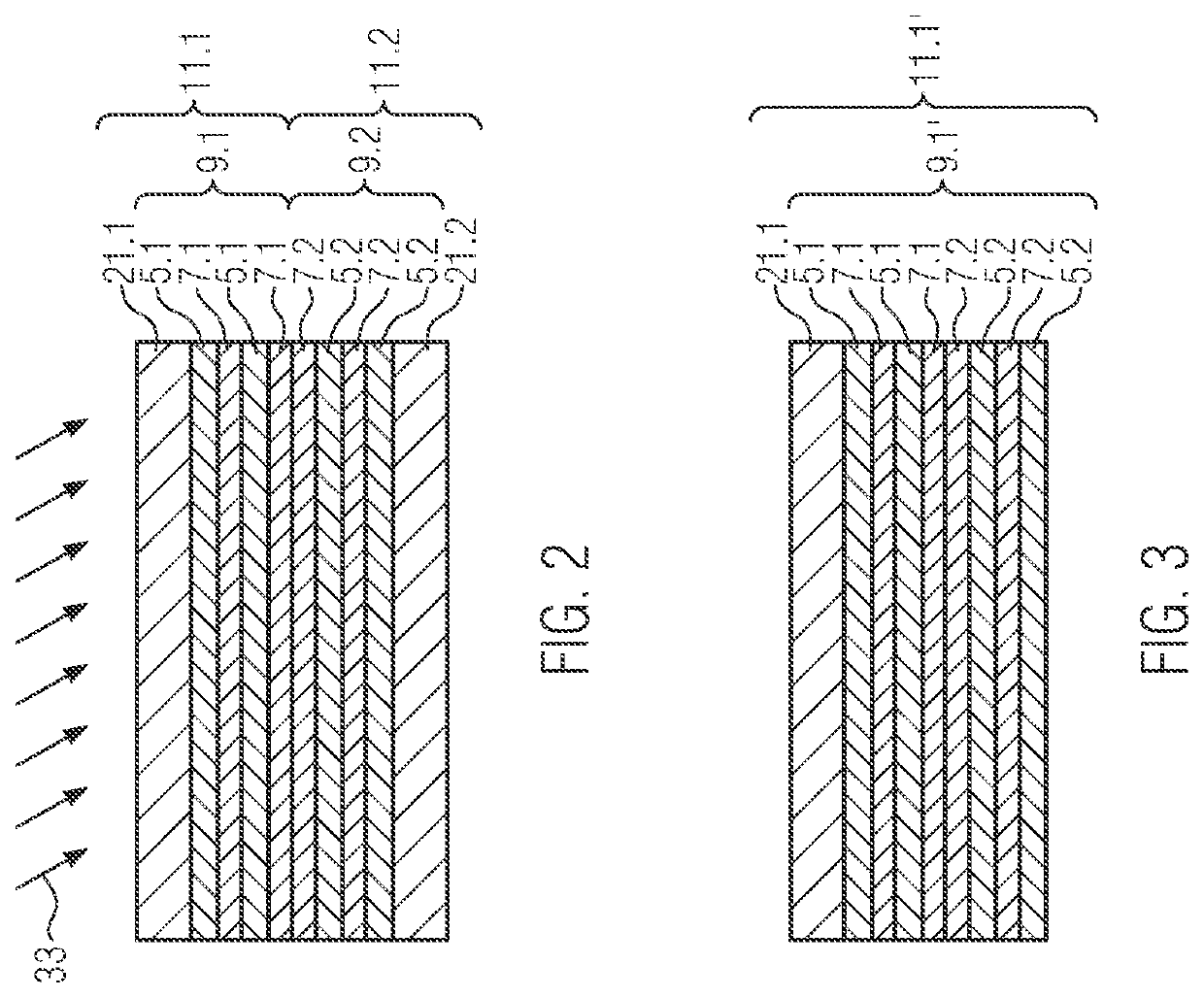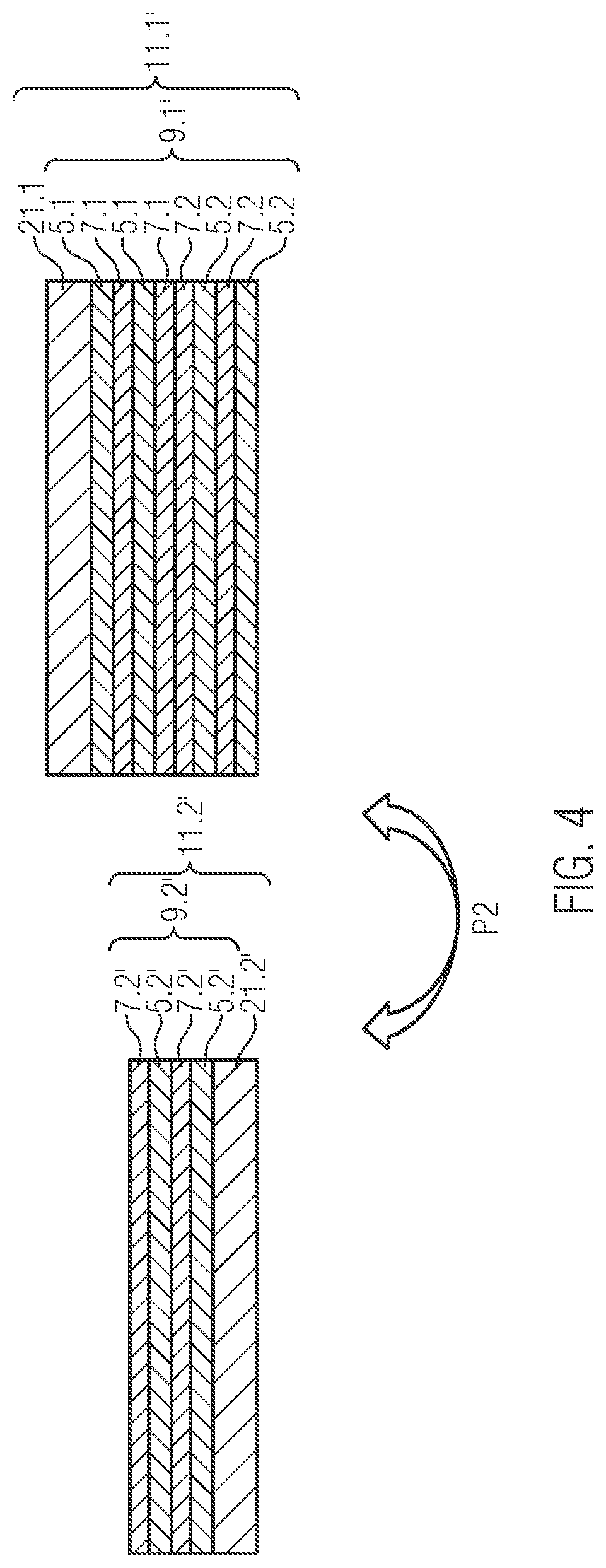Substrate-transferred stacked optical coatings
a technology of optical coatings and substrates, applied in the direction of optics, mirrors, instruments, etc., to achieve the effects of reducing overall optical losses, improving the position dependence of coating optical properties, and high mechanical quality
- Summary
- Abstract
- Description
- Claims
- Application Information
AI Technical Summary
Benefits of technology
Problems solved by technology
Method used
Image
Examples
example design 1
[0103]This design would be valid for a hybrid optical mirror assembly operating in the 2-5 μm spectral region; for example, 4.5 μm center wavelength mirror:[0104]a) Polished Si base / target substrate (curved or planar with radii of curvature from 0.1 to ∞ m, preferably having a substrate thickness of 5-10 mm).[0105]b) PVD stack forming the second optical coating, consisting of multiple layers of alternating high refractive index Si, with a refractive index of approximately 3.4, and low refractive index SiO2, with a refractive index of approximately 1.4, deposited via a suitable PVD technique (for instance, ion-beam or magnetron sputtering).[0106]c) GaAs / Al0.92Ga0.08As crystalline stack forming an optical coating consisting of multiple layers of alternative layers of high refractive index GaAs, with a refractive index of 3.3, and low refractive index Al0.92Ga0.08As, with a refractive index of 2.9, grown by MBE on a GaAs wafer as a host substrate.
[0107]For a 4.5 μm center wavelength mi...
example design 2
[0113]This design would be valid for a hybrid optical coating acting as a mirror in in the 2-12 μm spectral region; for example, 4.5 μm center wavelength mirror:[0114]a) Polished Si base / target substrate (curved or planar with radii of curvature from 0.1 to ∞ m, preferably having a substrate thickness of 5-10 mm).[0115]b) PVD stack consisting of multiple layers of alternating high refractive index Ge, with a refractive index of approximately 4.0, and low refractive index zinc sulfide, ZnS, with a refractive index of approximately 2.3, deposited via a suitable PVD technique (for instance, evaporation or sputtering).[0116]c) GaAs / Al0.92Ga0.08As stack forming an optical coating consisting of multiple layers of high refractive index GaAs, with a refractive index of 3.3, and low refractive index Al0.92Ga0.08As, with a refractive index of 2.9, grown by MBE on a GaAs wafer as a host substrate.
[0117]For a 4.5 μm center wavelength mirror, each of the multiple layers has a thickness which is ...
PUM
| Property | Measurement | Unit |
|---|---|---|
| thickness | aaaaa | aaaaa |
| reflectivity | aaaaa | aaaaa |
| wavelengths | aaaaa | aaaaa |
Abstract
Description
Claims
Application Information
 Login to View More
Login to View More - R&D
- Intellectual Property
- Life Sciences
- Materials
- Tech Scout
- Unparalleled Data Quality
- Higher Quality Content
- 60% Fewer Hallucinations
Browse by: Latest US Patents, China's latest patents, Technical Efficacy Thesaurus, Application Domain, Technology Topic, Popular Technical Reports.
© 2025 PatSnap. All rights reserved.Legal|Privacy policy|Modern Slavery Act Transparency Statement|Sitemap|About US| Contact US: help@patsnap.com



